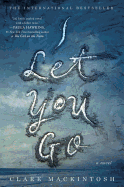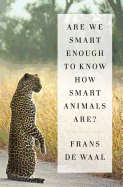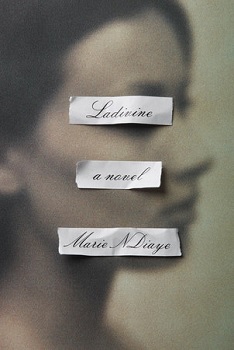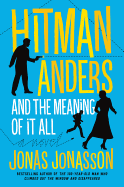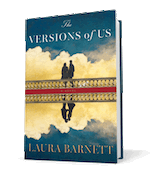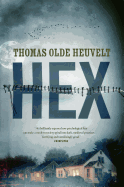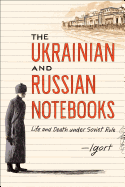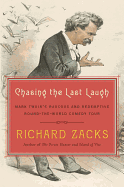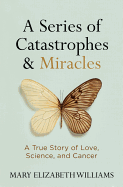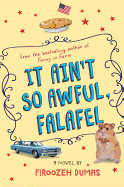Tuesday, May 3, 2016
 |
|
| George Plimpton | |
"What Walter Mitty dreamed about, Plimpton did. He broke through the wall, which meant I wanted to break through the wall," Rick Reilly observes in his foreword to The Bogey Man: A Month on the PGA Tour, one of seven George Plimpton sports titles reissued by Little, Brown. I'm re-reading them all, with great pleasure, for the first time in decades. Here's the rest of the lineup:
Out of My League: The Classic Account of an Amateur's Ordeal in Professional Baseball (foreword by Jane Leavy)
Paper Lion: Confessions of a Last-String Quarterback (Nicholas Dawidoff)
Mad Ducks and Bears: Football Revisited (Steve Almond)
Shadow Box: An Amateur in the Ring (Mike Lupica)
Open Net: A Professional Amateur in the World of Big-Time Hockey (Denis Leary)
One for the Record: The Inside Story of Hank Aaron's Chase for the Home Run Record (Bob Costas)
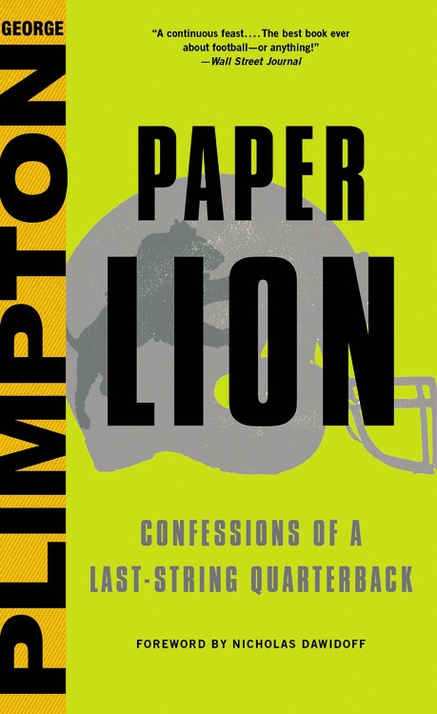 Paper Lion was my introduction to Plimpton's an-amateur-takes-the-field oeuvre. I first read it in 1967 and, as a decent high school athlete and good student, found a personal connection. It was deceptively easy to imagine I could do what he'd done--step gingerly into a professional sport and not embarrass myself... too much. His take was unique, smart and revelatory. I somehow recognized and appreciated the way he nimbly mixed his personal humiliations, and occasional minor victories, with incisive portraits of athletes who were strong yet vulnerable, gifted yet flawed.
Paper Lion was my introduction to Plimpton's an-amateur-takes-the-field oeuvre. I first read it in 1967 and, as a decent high school athlete and good student, found a personal connection. It was deceptively easy to imagine I could do what he'd done--step gingerly into a professional sport and not embarrass myself... too much. His take was unique, smart and revelatory. I somehow recognized and appreciated the way he nimbly mixed his personal humiliations, and occasional minor victories, with incisive portraits of athletes who were strong yet vulnerable, gifted yet flawed.
"It was [Alex] Karras's fantasy that he had lived a succession of different lives--stretching far back into the past." Reading that sentence for the first time in 50 years, I vividly pictured the near-sighted, bright and mischievous defensive tackle, spinning his outrageous tales of reincarnation. It made me smile like, well, a 17-year-old kid.
"He wins because he makes those forgotten practices involving distant players forever alive." Nicholas Dawidoff notes in the foreword.
Nobody would call these self-help books, but they made the link between my parallel lives as reader and athlete seem plausible. That was no small win. --Robert Gray, contributing editor
Father's Day
by Simon Van Booy
Simon Van Booy (The Illusion of Separateness) celebrates the parent-child bond through the story of an orphaned girl named Harvey, and the seemingly unsuitable uncle called upon to become her new father.
Van Booy follows two distinct periods in Harvey's life. The first begins with a visit to a duck pond with her father during early childhood; the other is set in Paris on Father's Day where Harvey, now grown, waits for her father to visit her. However, the men Harvey calls "Dad" are not the same person. When Harvey was six, her parents died, leaving her alone but for her father's estranged brother, Jason, an ex-con with a prosthetic leg who lived on disability checks and online sales of thrift items. Harvey's social worker Wanda can't help believing he and Harvey are each other's last chance; with a good deal of emotional manipulation and rule-bending, she convinces both Jason and the state that Harvey belongs with him. As a grown Harvey presents Jason with a series of Father's Day gifts commemorating turning points in their lives together, Van Booy flashes back to the moment each gift symbolizes, treating the reader to the evolution of a memorable relationship.
Van Booy doesn't shy away from the challenges of parenting, but despite their struggles, the pair find moments of grace and unexpected allies. Although any reader will find something to love here, someone who has benefited from a perfectly imperfect family will wear the widest smile. This little book with a big heart is suitable not just for Father's Day, but for any day. --Jaclyn Fulwood, blogger at Infinite Reads
Discover: When six-year-old Harvey's parents die, she forges a connection with the disabled ex-con uncle who becomes her second father.
Ladivine
by Marie NDiaye
On the first page of Ladivine by French novelist Marie NDiaye (Three Strong Women), readers meet a woman who is and is not named Clarisse Rivière. She grew up as Malinka, the daughter of a black West African single mother, Ladivine Sylla, and an unknown white man. Raised as "the princess" by her devoted, isolated mother, "the servant," Malinka realized early on that she could pass as white. She fled home, made a new life as the "resolutely inoffensive" Clarisse, married Richard Rivière, a white man, and kept him and her mother secret from each other all her life. Like her mother, she devotes herself entirely to her family, but "her voluntary, permanent self-effacement had constructed a thin wall of ice all around her, that sometimes her daughter and husband couldn't understand," and in time she loses them too. Alone, she becomes Malinka again for a short time, with an accepting but dangerously broken lover.
After Clarisse's death, NDiaye switches to the perspective of her grown daughter, Ladivine Rivière, who is struggling to reconcile her parents, her childhood and her young family. On a nightmarish African vacation, she and her husband transform in monstrous and illuminating ways.
NDiaye is a writer of the highest quality, and her work rewards careful reading and rereading. The world of Ladivine is complex and ambiguous; in many ways this is a bleak account of frustrated lives and loves, but it is tempered and graced by NDiaye's vision of beauty and strangeness in the world, the depth and strength of love and a final resolution of recognized truth. --Sara Catterall
Discover: A powerful and elegant saga of women and their families in a fated struggle of love, responsibility and integrity.
Before the Wind
by Jim Lynch
Before the Wind is a beautifully rendered story of a family of competitive sailors hailing from Puget Sound in Washington State. The Johannssen family are sailing phenoms: the father is the strong-willed leader of the pack; the mother turns her astute mind to the physics of boating; granddad Grumps offers strange advice and quips of wisdom; brother Bernhard incessantly travels the globe; and sister Ruby has a near-otherworldly relationship with water, wind and boats. And then there's Joshua, the youngest son, who spends his days fixing busted yachts at the local marina. When a boating race goes unexpectedly awry, and the oddball family parts ways, Joshua is left to pick up the pieces.
Joshua came of age on the water; after all, his entire family had been sailing for as long as anyone could remember. He became adept at this obsession that is equal parts sport, craft and profession, and in the process shared the bond that held his family together. Jim Lynch looks beyond the Johannssen family's calling to pry away the layers and examine what happens when such a fragile family link suddenly shatters. Each of the Johannssens is flung in opposite directions, if not on the globe, then in their own hearts. When they come back together again for an important race, a lot more than winning is on the line.
Adding to his success with Truth Like the Sun, Border Songs and The Highest Tide, Jim Lynch delivers another excellent, enjoyable novel of the Pacific Northwest. --Jarret Middleton, author/freelance editor
Discover: A funny, heartwarming saga about a family of boaters who reunite for a race in their home waters of Puget Sound.
Hitman Anders and the Meaning of It All
by Jonas Jonasson, transl. by Rachel Willson-Broyles
An unlikely trio of misfits--a one-star hotel receptionist, a disenchanted Protestant priest and a former hitman--hatches a scheme in Jonas Jonasson's (The 100-Year-Old Man Who Climbed Out the Window and Disappeared) rollicking satire about religious fanaticism, tabloid media and the joys of giving and taking.
Per Persson's life as the receptionist of the Sea Point Hotel is lackluster and mundane when Johan Andersson, aka Hitman Anders, is released from prison and checks into the hotel. But that all changes when Johanna Kjellander, an atheist priest, also takes up residence at the Sea Point. The three eccentric hotel inhabitants put their entrepreneurial talents together to form a business, one in which Anders does violent work--most anything short of murder--in exchange for payment. The receptionist and the priest drum up business with the help of the sensational headline-loving press and Anders's reputation. Their unorthodox business plan works out swimmingly--until Anders finds Jesus and decides he can't hurt people anymore. Per and Johanna aren't so ready to let go of their golden goose, though, so they hatch a con scheme that lands them on the wrong side of Sweden's most dangerous gangsters and sends all three running to church.
This fast-paced, zany adventure offers societal cautions in a witty, suspenseful, entertaining style. Jonasson's characters are the bumbling antiheroes readers can't help but love and root for. The strong translation maintains Jonasson's clever dialogue, and the universal themes on which he provides commentary make Hitman Anders enjoyable for any reader. --Jen Forbus of Jen's Book Thoughts
Discover: A hitman, a hotel receptionist and an atheist priest walk into a church, and Sweden will never be the same.
The Versions of Us
by Laura Barnett
With a few notable exceptions, such as the film Sliding Doors or Kate Atkinson's Life After Life, multiverse theory usually crops up only in the plots of comic books and speculative fiction. In this dexterously executed first novel, Laura Barnett imagines the story of two lives and one love from cradle to grave in three different ways, suggesting that no matter what choices we make, certain people will always find a way to each other.
Jim and Eva meet by chance as Cambridge students in 1958, when a rusty nail punctures Eva's bicycle tire and Jim offers to fix her flat. They fall madly in love, "[a]nd then they walk away together, out of the allotted grooves of their afternoons and into the thickening shadows of evening, into the dim, liminal place where one path is taken, and another missed."
In a second timeline, Eva bicycles past Jim and misses the nail, so they never meet. Eva marries her boyfriend David, a self-absorbed actor, unaware for years that Jim even exists.
The third possibility shows Eva hitting the nail, puncturing her tire, and taking a fall. As in version one, Jim stops to help and the two quickly connect. Eva breaks up with David and starts a relationship with Jim, but soon realizes she's carrying David's child. Unwilling to let Jim put off his future to raise another man's child, Eva breaks off their relationship and marries David without giving Jim a chance to offer to call the baby his own and raise it with her.
Barnett follows Jim, Eva, their families and friends through a lifetime of choices in each version, and the courses of their lives quickly take different directions despite common threads echoing through each. In every version, Jim longs for a career as an artist, driven by "the need to capture a moment, whether real or imagined, before it disappears," while Eva's destiny lies in writing. Jim always struggles with his mother's failing mental health, and David's narcissism always leaves Eva wondering if he ever truly loved her.
Although focused on relationships, Barnett never stops at the sweet side of romance, instead stepping into the tough territories that can come with any marriage: infidelity, career envy, absenteeism. In version one, Eva finds success with her writing, her star rising steadily, while Jim's art career refuses to get off the ground. Their marriage struggles under the weight of his jealousy and resentment as Eva becomes the primary breadwinner while he teaches art, his insecurities deepening as David, Eva's ex, goes on to become a celebrity actor. In version two, Eva spends years standing in David's shadow, taking time to find herself and someone without whom life is like "[a]n open road ribboning endlessly across flat desert lands." Jim lives in a commune and has a child with another artist but works on a portrait of the captivating married woman he met at a party--Eva. In version three, Jim meets many of the same people who play an important role in his art career in version two, but he remains haunted by his brief relationship with Eva, who comes to regret her decision to leave him.
The versions alternate in five- to 10-page chapters, unfolding as a comparison of the three different lives. Initially beginning with a prologue about Jim's and Eva's parents and births before splitting into the three alternate realities and always ending with a version of the cast "looking out to where the shadows are gathering, and the night coming on," the greater work gives the sense of a universe beginning as a small creation, expanding constantly outward, then gradually drawing back in on itself as the characters age and begin "to know happiness for what it is: brief and fleeting, not a state to strive for, to seek to live in, but to catch when it comes, and to hold on to for as long as you can."
Sensitive Jim usually suffers for his art, and even when he allows his petulance to damage his marriage, his sharp longing to realize his dreams creates a natural sympathy toward him, even when his pride leads him into unnecessary torment. Secondary characters provide drama, like Jim's volatile lover Helena, or comic relief, like self-involved David, whose charisma and deep-seated unconcern for others' feelings make him a joy to dislike. Eva, however, is the uncontested star, continually winning the reader over with her grace, grit and intelligence, and if Jim occasionally accuses her of overshadowing him, readers will realize he is always lucky to find her. Their enduring pull toward each other will move anyone who has had that moment of recognition when meeting a total stranger, but Barnett never tries to make a grandiose statement about fate. Instead, in each storyline, we simply see that the greatest parts of life lie in the journey and the connections we make along the way, the people who help us create the best versions of ourselves. Barnett's ability to turn normal lives into a sprawling, triumphant epic will leave readers excited to see what this brilliant newcomer does next. --Jaclyn Fulwood
Mystery & Thriller
I Let You Go
by Clare Mackintosh
One minute, a young mother is walking home with her five-year-old son, Jacob. The next, he's dead, hit by a car; the driver takes off without stopping.
Jenna is shattered by the car accident. She leaves her house one day with no destination in mind, wanting only to get lost. She ends up in a remote Welsh seaside town, where she rents a rundown cottage and starts rebuilding her life.
Detective Inspector Ray Stevens and his junior officer, Detective Constable Kate Evans, catch the case but months pass with no leads. Though ordered by the chief constable to close the case, Kate keeps working on it on her own time, and eventually convinces Ray to review the old files, too. They finally get a solid clue about the guilty driver's identity. What happens next upends Jenna's life, for nothing is as it appears, and the cops find they're far from closing the case.
It's hard to believe I Let You Go is Mackintosh's debut novel because it's so assured. The author doesn't just conjure up memorable characters and gripping plots; her settings ring true. Mackintosh is also very good at keeping readers ensnared in suspense. The most impressive feat she pulls off is a bombshell--readers who say they saw it coming are most likely fibbing. The revelation is so good, readers might want to reread I Let You Go to see how it changes their perceptions--even the title takes on different interpretations--and whether or not the twist holds up. It does. This kind of sharp, cunning writing makes one eagerly look forward to Mackintosh's next novel. --Elyse Dinh-McCrillis, blogger at Pop Culture Nerd
Discover: Clare Mackintosh's assured debut spins a fatal hit-and-run mystery into a gripping, explosive story.
Hex
by Thomas Olde Heuvelt, transl. by Nancy Forest-Flier
While gathered around the family dinner table, teenaged Tyler Grant teasingly asks his father, "If you had to let somebody die, o padre mio, who would it be: your own kid or the rest of our town?" Many parents have had to field an equivalent question from their children at some point. However, in Dutch novelist Thomas Olde Heuvelt's Hex, the haunting presence of the immortal witch Katherine van Wyler serves as a sewn-mouth-and-eyes reminder of the possibilities such a question encompasses. For more than 350 years, van Wyler, the Black Rock Witch, has roamed the small New England town of Black Spring. The secret of her existence is contained jointly by the United States government and Black Rock citizens; her powers are somewhat constrained by the stitching that seals her eyes and most of her mouth. Containment, however, is incomplete: through one removed stitch, she can whisper and drive people to horrifying suicide.
Thick atmosphere, disturbing imagery and an almost unbearable tension pervade this narrative. Heuvelt develops a series of indelible scenes as the citizens of Black Spring are pushed to their psychological limits in dealing with the malignant presence among them. The tension is the strongest element of the story, and its apogee so high that what follows is almost a letdown--a horrifying, relief-fueled letdown. This is not a real weakness, but rather a testament to what Hex has led the readers up to. --Evan M. Anderson, collection development librarian, Kirkendall Public Library, Ankeny, Iowa
Discover: In a truly nightmare-inducing story, a witch's eyes must never be opened.
Graphic Books
The Ukrainian and Russian Notebooks: Life and Death Under Soviet Rule
by Igort, transl. by Jamie Richards
Italian comics artist and illustrator Igort (5 Is the Perfect Number) spent nearly five years in Ukraine, Russia and Serbia trying to understand and document the atrocities committed by the Soviet Union, and later Russia, on its own people. The first half of this stunning graphic novel, "The Ukrainian Notebooks," examines the 1932-1933 Ukraine famine orchestrated by Joseph Stalin. Created to destroy many of the Ukrainian people, their culture and their independence, food shortages caused millions to die of starvation and even resort to cannibalism. The second half, "The Russian Notebooks," sheds light on the 2006 assassination of Russian journalist Anna Politkovskaya and examines Russia's disappearing democracy. Alongside Anna's story, as told by those who knew her, Igort shares interviews with soldiers sent to Chechnya, who committed unfathomable and grotesque crimes and torture. Igort's accompanying art reveals both the victims and perpetrators in stark and humanizing detail.
Igor layers the interviews, one by one and fact after fact, so that readers are left with nothing but disturbing truth. His color palette is as stark as the terrors these people have faced: washed-out browns and reds, with some grey and black. This factual telling bears witness not only to the horrors, but also to the resilience that these people have needed to draw upon to survive. An illustrated postscript, dated September 2014, details what Western media had called a civil war when it was in fact a war of invasion by the Russian Federation. That the unpredictable violence of the past continues to this day makes The Ukrainian and Russian Notebooks a critical read. --Justus Joseph, bookseller at Elliott Bay Book Company
Discover: Comics artist Igort reveals both historic and present-day crimes committed by Soviet and Russian governments against Ukrainian and Russian civilians.
Biography & Memoir
Chasing the Last Laugh: Mark Twain's Raucous and Redemptive Round-the-World Comedy Tour
by Richard Zacks
In 1896, Mark Twain was 60 years old, the beloved author of Huck Finn and Tom Sawyer, and the highest-paid writer in the U.S. He was also on the verge of financial disaster, most of which he had brought on himself through a combination of cockeyed optimism and impatience with details. Determined to keep a larger percentage of the proceeds from the sales of his books, he had founded his own publishing company, which proved to be a cash drain rather than a source of income. He poured money into James Paige's innovative typesetting machine--which was eclipsed by the Mergenthaler Linotype in the 19th century's version of the technological duel between Beta and VHS--and encouraged others to do the same. He signed documents he didn't understand. He filed for bankruptcy, but continued to be pursued by creditors who refused to believe the luxury-loving author had nothing. Finally, Twain saw only one solution: to go back on the public-speaking circuit, which he had happily left 25 years before.
In Chasing the Last Laugh: Mark Twain's Raucous and Redemptive Round-the-World Comedy Tour, Richard Zacks (Island of Vice) turns the circumstances that led Twain to undertake a yearlong tour of the English-speaking world, and the tour itself, into a combination of high drama, black comedy and occasional tragedy. The result is a lively and insightful study of the claims of celebrity, the value of controlling the public narrative, and the mercurial figure of Twain himself. --Pamela Toler, blogging at History in the Margins
Discover: An account of how Mark Twain's struggles with celebrity, financial ruin and self-publishing led him to take a year-long, public-speaking tour of the English-speaking world.
A Series of Catastrophes and Miracles: A True Story of Love, Science and Cancer
by Mary Elizabeth Williams
Spoiler alert: the author, Mary Elizabeth Williams (Gimme Shelter), survives an invasive melanoma found on the back of her head. With frankness, tenderness and occasionally graphic details, A Series of Catastrophes and Miracles spells out what it meant for Williams, and her family and friends, to be diagnosed with this particular type of cancer. She also writes about her father-in-law's struggles with colon cancer and her best friend, Debbie, who was diagnosed with ovarian cancer about the same time as Williams.
Because she had melanoma, a particularly aggressive and rapid growing, nearly always fatal form of cancer, Williams was eligible to participate in a clinical trial for immunotherapy that used a combination of two drug types to activate the body's T cells. Immunotherapy was first used as a treatment course as far back as the 1890s, but quickly took a back seat to chemo and radiation, which had higher success rates. With advances in medical science and a better understanding of how the human body functions, however, more emphasis is being placed on this still controversial method. Williams delves into the scientific side of her recovery as well as the emotional and physical tolls of undergoing treatment while trying to maintain a somewhat normal life with her husband and two daughters. Laughter, tears, love, amazing stamina and determination factor into her ability to move beyond being a cancer patient, to become someone who faced death and now lives life to the fullest surrounded by those she loves. --Lee E. Cart, freelance writer and book reviewer
Discover: A heartwarming and frank story of a woman diagnosed with melanoma who undergoes experimental treatments--with life-saving results.
Science
Are We Smart Enough to Know How Smart Animals Are?
by Frans de Waal
Frans de Waal, celebrated biologist, primatologist and author of works such as The Bonobo and the Atheist, has a grudge to settle with animal intelligence skeptics. In Are We Smart Enough to Know How Smart Animals Are?, de Waal challenges the long-held belief that "there was no need to worry about the internal lives of animals, and anyone who did was anthropomorphic, romantic, or unscientific." The title is an excellent summary of its contents, which is largely an argument against human-centric notions of intelligence and in favor of looking at animals as more than simple "stimulus-response machines."
To make his point, de Waal delves into science's fraught relationship with animal cognition, using anecdotes, fieldwork and data to support his conclusions. The material is thoughtful, but rarely dry, and punctuated occasionally by humor. Take this passage, for example, on feline intelligence: "A recent study showed that felines have no trouble recognizing their owner's voice. The deeper problem is that they don't care." De Waal's enthusiasm and deep empathy are infectious as he sets out to prove that "every single species has profound insights to offer." And while de Waal is perfectly aware of the old dictum that "the plural of anecdote is not data," he recognizes the distinctive power they have to demonstrate abstract concepts to the layperson. The few readers who aren't convinced by de Waal's impassioned argumentation will at least be entertained by his light touch. --Hank Stephenson, bookseller, Flyleaf Books
Discover: Biologist Frans de Waal challenges human-centric notions of animal intelligence with humor and élan.
Children's & Young Adult
It Ain't So Awful, Falafel
by Firoozeh Dumas
Firoozeh Dumas (Funny in Farsi) makes her middle-grade fiction debut with her semi-autobiographical novel It Ain't So Awful, Falafel.
The summer of 1978, Zomorod Yousefzadeh renames herself Cindy, after Brady Bunch Cindy, the most normal American name she knows: "It's not like I'm trying to pretend that I'm not Iranian. I just want people to ask questions about me when we meet, not about where I'm from." After bouncing back and forth from Iran to California for years, Cindy is now adapting to sixth grade in Newport Beach, balancing her parents' expectations--including being her mother's translator--with fitting in as a "normal" tween. With her new friend Carolyn as her guide, Cindy discovers taco nights, Girl Scouts, Halloween, sleepaway camp and more. And then her home country is in revolution: the Shah is ousted, Ayatollah Khomeini takes brutal control and Americans are held hostage for 444 days. Being Iranian in the U.S. becomes a matter of survival: Cindy's father loses his engineering job and can't find another, family funds quickly dwindle, and bumper stickers proclaiming "Iranians: Go Home!" seem ubiquitous.
Through Cindy's feisty, observant voice, the author distills a difficult chapter in U.S. history into an accessible coming-of-age novel. Deftly mixing droll humor ("Please excuse Cindy from the test today. Our country just had a revolution."), reality checks (a dead rodent left on her family's doorstep as a warning), and gracious empathy ("people... are not truly horrible; they just need a geography class, a passport, and a few foreign friends"), Dumas draws on the nurturing power of family and friends to prove It Ain't So Awful indeed. --Terry Hong, Smithsonian BookDragon
Discover: Memoirist Firoozeh Dumas's middle-grade fiction debut introduces a spunky Iranian transplant in Southern California during the Iranian hostage crisis.
Wild Swans
by Jessica Spotswood
If all goes according to family tradition, 17-year-old Ivy Milbourn of Maryland's Eastern Shore will lead an extraordinary though troubled life with her remarkable talents... and then die young. The only problem is, unlike the four generations of gifted women before her, Ivy hasn't found her one remarkable talent: "I'm on the swim team, but I'm never going to be an Olympic athlete. I'm an honors student, but I won't be valedictorian. Sometimes I write poems, but that's just to get the restless thoughts out of my head.... I am completely, utterly ordinary."
It's the summer before senior year, and Ivy--"a salt-and-sunshine girl"--is ready to take it easy, to resist the pressure her grandfather--an English professor who has cared for her since her mother ran off when Ivy was two--puts on her to find her brilliance. So when her mother shows up with two younger daughters who have been told that Ivy is their aunt, Ivy is thrown for a loop. Her fierce, spiky-blonde mother is toxic from the start, drinking all day and jabbing Ivy with barbed words: "You're the kind of people who drive everyone away." The one person Ivy seems not to be driving away is Connor, her grandfather's ambitious, kind, biracial protégé, whose muscled body happens to be covered in tattoos of his favorite poems, including Ivy's Pulitzer Prize-winning great-grandmother's.
Jessica Spotswood's (A Tyranny of Petticoats; the Cahill Witch Chronicles) complex, emotionally charged and engaging novel folds in family expectations, changing friendships, adolescent identity crises and a steamy budding romance--a perfect recipe for young adult fiction. --Emilie Coulter, freelance writer and editor
Discover: "Mediocre" teen Ivy strains against the expectations of her matrilineal legacy--or is it a curse?--of artistic genius.
| Advertisement nuremberg--now playing in theaters |



